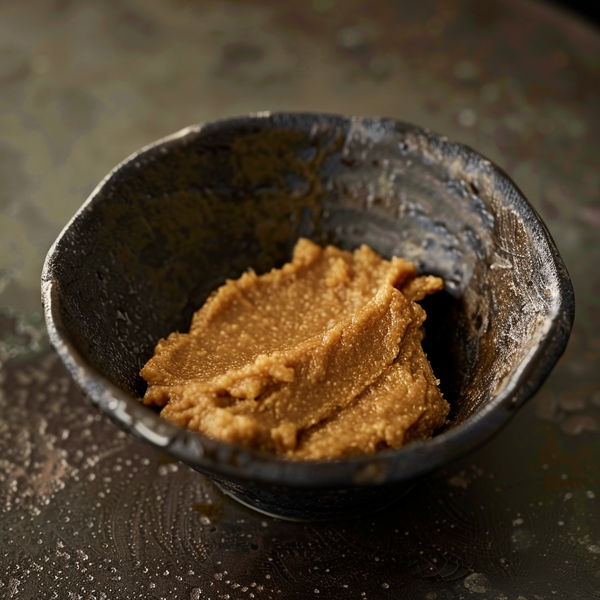
Miso paste
Miso paste, a traditional Japanese seasoning produced by fermenting soybeans with salt and koji (a mold starter), and sometimes rice or barley, is celebrated for its rich umami flavor. Its versatility makes it a valuable ingredient in both traditional and modern culinary applications. Here’s how miso paste is commonly used in cooking:
Soups: Miso soup is perhaps the most famous use of miso paste. It typically involves dissolving miso in a stock (like dashi) and is often accompanied by tofu, seaweed, and green onions. Miso soup is a staple in Japanese cuisine, served as a side dish with meals.
Marinades: Miso paste makes an excellent marinade for fish, chicken, pork, and beef. It not only imparts flavor but also helps to tenderize the meat due to its enzymatic properties. Salmon and cod are particularly popular choices for miso marination.
Sauces and Dressings: Miso paste is used to create flavorful sauces and dressings for salads, bowls, and stir-fries. It can be mixed with ingredients like vinegar, oil, ginger, and honey to make a rich, umami-packed dressing.
Vegetable Dishes: Miso is often used as a seasoning for roasted or glazed vegetables. It pairs well with the natural sweetness of root vegetables like carrots and sweet potatoes.
Rice and Grain Dishes: Miso can be stirred into cooked rice or grain dishes to add depth and richness. It works particularly well in hearty grain bowls or as part of a rice pilaf.
Spreads: Miso can be mixed with butter or cream cheese to create a savory spread for bread, crackers, or sandwiches.
Dips: Combining miso with ingredients like tahini, yogurt, or mayonnaise can produce a delicious dip for fresh vegetables, chips, or pita.
Tofu Dishes: Miso is a popular seasoning in tofu dishes, enhancing the tofu’s mild flavor with a savory depth. It can be used in braises, stir-fries, or as part of a tofu scramble.
Noodles: Miso paste adds complexity to noodle soups and sauces. It can be integrated into ramen broth or mixed into a sauce for soba or udon noodles.
Stews and Braises: Adding miso paste to stews and braises enhances the umami flavor of the dish, deepening the overall taste profile without overpowering the other ingredients.
When cooking with miso paste, it's important to add it toward the end of the cooking process. High heat can destroy some of its subtle flavors and beneficial probiotics. There are various types of miso, including white, yellow, red, and mixed. Each type offers different levels of sweetness and intensity, allowing for diverse culinary applications based on the desired flavor outcome. Whether used in traditional Japanese dishes or incorporated into Western cooking styles, miso paste is a dynamic ingredient that brings warmth and complexity to a variety of dishes.
Nutritional Information
calories
199
carbohydrates
26.47 g
fats
6.01 g
protein
11.69 g